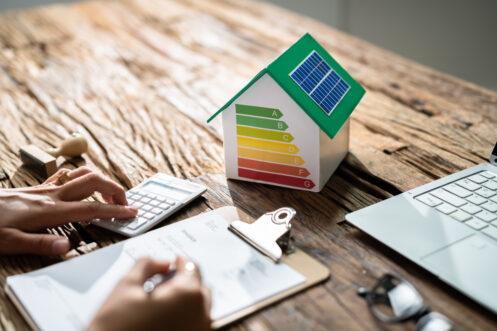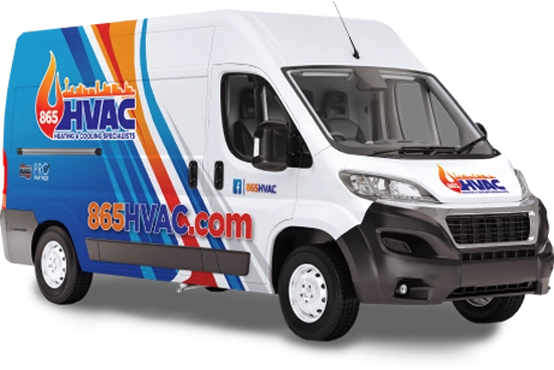As technology continues to improve, HVAC industry professionals are finding new and improved ways of enhancing energy efficiency, convenience, and home comfort. Some exciting upcoming trends to look out for include:
1. Predictive Maintenance
Predictive maintenance is a new technology meant to enhance occupants’ comfort and energy conservation. Instead of waiting until something breaks down in the system, it allows you to predict the likelihood of equipment failures before they occur.
There are a few ways that HVAC systems achieve this. The first is vibration and thermal analysis. Various sensors spread all over the system monitor vibrations, pressure, and temperature changes of the different components of the system to detect anomalies that might indicate wear or impending failure. Naturally, a worn-out component will have to work harder to achieve the same level of performance, which may lead to greater friction or increased stress. The sensors will pick up these unexpected changes in that part condition and send alerts to your phone or computer, which you can then quickly address.
The second method involves data collection and analysis. Your system will use your repair histories, previous maintenance records, and performance test results to comprehensively understand its health. Advanced algorithms then analyze this information to identify patterns and predict when maintenance or repairs would be needed.
Another technique (the highest form of predictive maintenance) involves creating a digital twin simulation that mimics the condition of your system, home, and environment to test “what if” scenarios. It employs artificial intelligence to play out potential issues that may arise in different circumstances (such as if you get a new pet, leave the door open for hours, or forget to replace the air filters) and predicts how these factors could impact system performance.
2. HVAC System and Smart Home Technology Integration
The HVAC industry has witnessed a technological revolution in the last decade that has transformed heating and cooling systems into an intelligent network capable of monitoring and adapting to environmental conditions. Features that stood out include geofencing, which uses your smartphone’s location to adjust temperature automatically when approaching or leaving home, and the ability of your smart thermostat to learn your schedule and preferences to optimize heating and cooling cycles.
However, modern thermostats not only learn your behavior but also use AI to predict your comfort needs proactively. This means they can adjust settings before you even realize you need a change, thus ensuring consistent comfort and energy efficiency. IoT (Internet of Things) sensors can also optimize airflow and heating based on real-time data, adapting to changes in the number of people in your room, weather conditions, and indoor air quality.
Further, you’ll be able to integrate your central HVAC unit with other devices and appliances, allowing them to communicate and work together seamlessly. This will enable a holistic approach to home automation, where your heating or cooling system interacts with smart lighting, security, and entertainment systems to create a truly personalized and comfortable living experience.
3. Energy Efficiency as a Standard
Energy efficiency as a standard started as early as 2023. All HVAC products produced now have a higher and more realistic Seasonal Energy Efficiency Ratio 2 (SEER2), Heating Seasonal Performance Factor (HSPF), and Annual Fuel Utilization Efficiency (AFUE) ratings. Even if you don’t scrutinize the label, you’ll be certain your system consumes less energy while providing better indoor air quality and consistently comfortable temperatures.
In 2025, expect even better advancement in energy efficiency. Modern boilers and furnaces are incorporating a second heat exchanger to capture additional heat from exhaust gases and recycle it back into the system, significantly boosting energy efficiency. This feature also helps lower emissions, thus reducing your carbon footprint.
Air conditioners, on the other hand, are adopting variable-speed compressors that adjust cooling capacity based on the actual cooling demands of a space. For instance, if you just entered a room that had been vacant for hours, the AC would initially ramp up quickly to bring the temperature to your desired level, then slow down the compressor fan speeds to maintain that comfort with minimal energy usage.
Traditional compressors used to run at full speed at all times, even when less cooling was needed. This led to high energy consumption and faster wear and tear.
4. Better Indoor Air Quality
With increased awareness of the impacts of poor air quality on health and cognitive development, improving indoor air quality has taken center stage in recent years. You should expect to see systems that use carbon filters, HEPA filters, and UV-C light systems to clean air. Carbon air filters can remove toxic gases, volatile organic compounds (VOCs), and general odors inside your home. HEPA filters can eliminate at least 99.97% of airborne particles, including viruses, bacteria, smoke, and all types of allergens. They weren’t used before because they restricted airflow and made HVAC systems inefficient. However, today, more systems are made to accommodate their tightly woven fibers without compromising airflow.
UV-C systems installed inside HVAC systems further sterilize air by destroying the DNA of pathogens such as bacteria, viruses, fungi, and mold spores floating around inside your home. It basically renders them harmless and unable to procreate.
You’ll also see systems that come with built-in humidifiers and dehumidifiers. Humidity control leads to easier breathing, reduced allergy and respiratory issues, improved skin and hair health, and preservation of properties and devices.
5. HVAC Zoning for Personalized Comfort
HVAC system manufacturers understand that different rooms have varying heating and cooling needs. For instance, there are rooms that face the sun all day, some that are barely occupied, and others that are key living spaces used frequently. In order to address these differences, newer systems allow for independent temperature control in each zone.
They achieve this in two ways: duct dampers or the adoption of multi-zone ductless HVAC systems. Duct dampers are valves installed inside your ductwork network that can open or close to allow or restrict airflow to different sections of the house. For example, if you don’t want the guest room to be heated, you can remotely shut the damper in the duct supplying conditioned air to that room. As a result, you’ll save energy and reduce wear and tear on your system since it won’t run unnecessarily.
Multi-one ductless HVAC systems consist of one outdoor unit and multiple indoor air handlers, each with its own thermostat. The indoor unit delivers heated or cooled air directly into the indoor space, depending on the thermostat settings of that specific area. For instance, if you set your temperature to 68°F and the person next door sets theirs to 72°F, the outdoor unit will supply a hot refrigerant to the evaporator coils of the two indoor units but modulate its flow accordingly to meet the different temperature requirements.
Contact 865 HVAC to Take Advantage of the New HVAC Technologies
If you want to stay ahead of the curve and take full advantage of these revolutionary technologies, contact 865 HVAC in Knoxville, TN, to schedule a consultation with our expert team. We will walk you through the ones you can integrate into your current system or advise you on the best brands to install. Besides HVAC, you can also reach out to us for any indoor air quality improvements and plumbing work you may need in your home.
Call 865 HVAC today for HVAC upgrades in Knoxville, TN.


